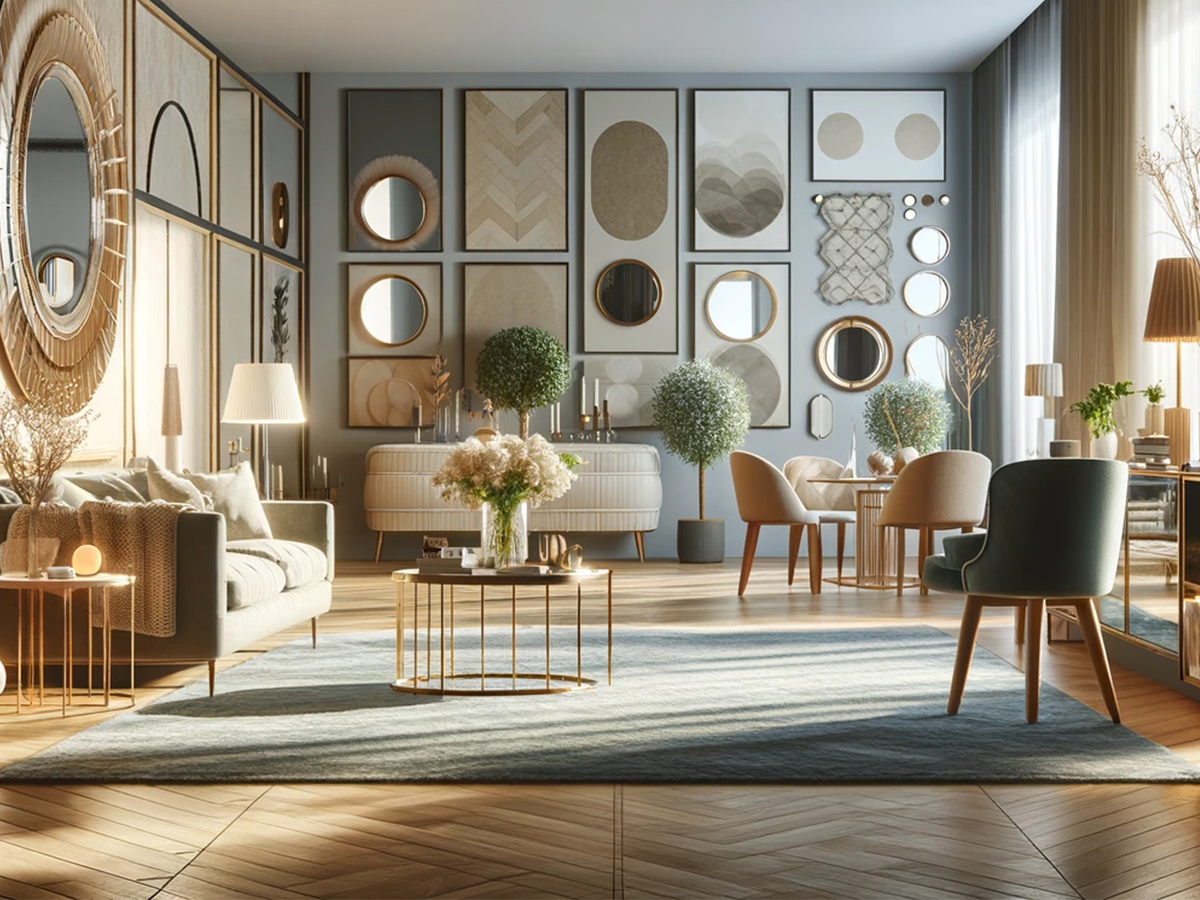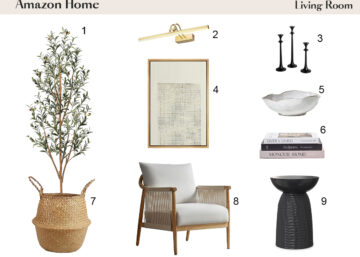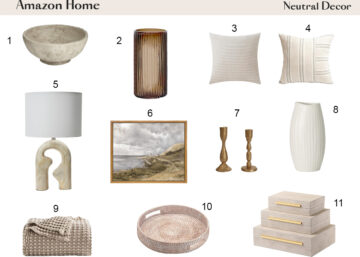Decorating with Mirrors: Tips for Spaciousness and Style
Introduction: The Transformative Power of Mirrors in Interior Design
Unlocking Spatial Dynamics with Mirrors
Mirrors are more than just tools for reflection; they are versatile elements in interior design that can transform spaces in profound ways. Beyond their practical applications for personal grooming, mirrors have the unique ability to enhance the perceived size of a room, manipulate light, and elevate the overall aesthetic appeal. This introduction explores how integrating mirrors into home decor can not only amplify the sense of spaciousness but also enrich the style and ambiance of any environment. By strategically positioning mirrors, homeowners and designers can create interiors that feel larger, brighter, and more visually appealing, making mirrors a key component in modern design strategies.
Choosing the Right Mirrors: A Guide to Enhancing Interior Spaces
Selecting the perfect mirror for your space involves more than just finding a reflection; it’s about understanding shape, size, and style to complement the room’s aesthetics and functionality.
Shape Matters: Matching Mirrors to Room Dynamics
The shape of a mirror can significantly influence the perception of a room. For instance:
- Rectangular Mirrors: Ideal for living rooms or bedrooms, their horizontal orientation can make rooms appear wider, especially useful in narrow spaces.
- Round Mirrors: Soften angular spaces with their curves and are perfect for adding a gentle, calming element to bathrooms and entryways.
- Oval Mirrors: Combine the softness of round mirrors with the elongating qualities of rectangular shapes, making them versatile for any setting.
- Unique Shapes: Geometric or irregularly shaped mirrors can serve as statement pieces, adding a distinctive flair to modern decor themes.
Size and Placement: Maximizing Impact and Functionality
Choosing the right size is crucial for balancing aesthetics and practicality:
- Large Mirrors: Can dramatically increase the sense of space and light in a room, making them ideal for small or darker rooms. Positioning a large floor mirror opposite a window can double the natural light in a room.
- Small Mirrors: Work well in clusters or in combination with wall art to enhance decor without overwhelming the space. They are particularly effective in hallways or as part of a gallery wall in living areas.
Frame Styles: Reflecting the Home’s Character
The frame of a mirror can dramatically alter its impact:
- Wooden Frames: Bring warmth and a natural element, suitable for rustic or Scandinavian-inspired interiors.
- Metal Frames: In brass or nickel, add a touch of sophistication and elegance, aligning well with minimalist or industrial themes.
- Frameless Mirrors: Offer a sleek, modern look that enhances contemporary spaces without adding visual weight, making them ideal for smaller rooms or bathrooms.
Considerations for Enhancing Decor
- Matching or Contrasting: Decide whether the mirror should blend with the room’s decor or stand out as an accent piece. A mirror with a colorful frame can add a pop of color to a neutral room, while a classic, ornate frame can complement a more traditional decor.
- Functional Versus Decorative: Consider whether the primary purpose is functional, like in bathrooms and bedrooms, or purely decorative, such as in living areas. This will influence the choice of size, style, and placement.
Strategic Placement for Maximizing Light: Enhancing Spaces with Mirrors
Harnessing the reflective power of mirrors to enhance natural light within a space involves strategic placement and thoughtful consideration of the surrounding environment. Here’s how to optimize the placement of mirrors to brighten up any area effectively.
Optimizing Window Reflections
One of the most effective strategies for maximizing light using mirrors is to amplify the natural light entering through windows.
- Directly Across from Windows: Placing mirrors directly across from windows can effectively double the light in a room by reflecting sunlight back into the space. This technique is particularly useful in rooms that receive limited direct sunlight.
- Adjacent to Windows: For a subtler effect, positioning mirrors on walls adjacent to windows can help spread light throughout the room without creating direct reflections, which might be overwhelming in very sunny environments.
Enhancing Light in Dark Corners
Mirrors can transform dark, forgotten corners of a room into bright, inviting spaces.
- Corner Placement: Installing mirrors in room corners can capture and redirect light from multiple angles, significantly brightening these areas. This technique is especially effective in square rooms where light struggles to permeate.
- Angled Toward Light Sources: Angling a mirror slightly toward a nearby lamp or overhead light can also increase light dispersion during the evening, enhancing the effectiveness of artificial lighting.
Creating Light Pathways
Mirrors can create pathways of light that flow from room to room, adding depth and continuity to the home’s lighting scheme.
- Hallways and Passageways: Strategically placing mirrors in hallways or between rooms can reflect light into these transitional spaces, which often lack natural light sources.
- Reflective Surfaces on Opposite Walls: Using smaller mirrors on opposite walls in a hallway or a long room can create a visual pathway of reflected light, making the space appear longer and more connected.
Maximizing Artificial Lighting
Mirrors are equally effective in amplifying artificial lighting, providing a dual benefit throughout the day.
- Above or Beside Light Fixtures: Placing mirrors near wall sconces, lamps, or overhead lights can enhance light intensity and coverage, making a room feel brighter and larger.
- Decorative Mirror Arrangements: Arranging multiple smaller mirrors around a central light fixture can act as a decorative element that also boosts the light’s reach and effect.
Using Mirrors Outdoors
Mirrors aren’t just for indoor use; they can also enhance the lighting and space of outdoor living areas.
- Garden Mirrors: Installing mirrors on fences or walls in a garden can reflect sunlight and brighten shaded areas, making small outdoor spaces feel larger and more open.
- Patio Reflections: Mirrors placed on exterior walls or incorporated into patio design can redirect sunlight to darker areas of the patio, enhancing evening illumination with reflected artificial light.
Creating Visual Space: Expanding Interiors with Mirrors
Mirrors are a powerful tool in interior design, capable of transforming the perception of space. Strategic placement and thoughtful consideration can turn mirrors into virtual windows and doors that expand the room visually. Here’s how to utilize mirrors to create and enhance visual space effectively.
Enhancing Small Spaces with Optical Illusions
The right mirrors can make small rooms feel significantly larger by creating optical illusions that extend the space.
- Full-Length Mirrors: Installing full-length mirrors can make a room feel taller and more spacious. Position these mirrors so they reflect the longest part of the room, which amplifies the sense of depth and space.
- Mirrored Walls: Using a mirrored wall or large mirrored panels can virtually double the visual space of a room, making it appear twice its actual size. This technique is particularly effective in small dining areas and entryways.
Using Mirrors to Broaden Narrow Areas
Narrow spaces, such as hallways or small bathrooms, can feel more expansive with the correct use of mirrors.
- Horizontal Placement: In narrow hallways, placing mirrors horizontally can break up the length and make the space feel wider. This placement tricks the eye into perceiving a broader area.
- Strategic Angles: Angling mirrors towards focal points or perpendicular to the long walls can redirect the view and widen narrow spaces effectively.
Mirrors and Furniture Coordination
Integrating mirrors with furniture enhances the utility and aesthetic of both, expanding the visual space while adding functional value.
- Behind Furniture: Placing mirrors behind key pieces of furniture like sofas or beds can open up the room without requiring additional wall space for hanging.
- Reflecting Art and Views: Positioning mirrors to reflect art pieces or scenic views from windows can duplicate visual interests and draw the eye, making the space feel larger and more enriched.
Clever Use of Decorative Mirrors
Decorative mirrors aren’t just accents; when used correctly, they can alter the perception of space significantly.
- Gallery Wall of Mirrors: Create a gallery wall with mirrors of various shapes and sizes to distribute light and reflect different parts of the room, which adds complexity and depth to the space.
- Themed Arrangements: Using mirrors with frames that match the room’s decor theme can integrate them seamlessly into the space, enhancing the overall design while expanding the visual field.
Maximizing Vertical and Horizontal Dimensions
Understanding how to manipulate both the vertical and horizontal perceptions of space can result in a more balanced and pleasant environment.
- Vertical Expansion: Tall, slender mirrors placed strategically can heighten low-ceiling rooms, creating an illusion of a more vertical space.
- Horizontal Spread: Broad, horizontally oriented mirrors can extend wall space in cramped quarters, offering a sense of a wider room.
Functional Uses of Mirrors in Home Design
Mirrors are a staple in home decor not only for their aesthetic appeal but also for their multi-functionality. Beyond expanding spaces and enhancing light, mirrors serve several practical purposes in everyday home environments. This section delves into the diverse functional applications of mirrors, transforming ordinary spaces into areas of increased utility and style.
Enhancing Room Brightness and Energy Efficiency
Mirrors can significantly increase the brightness of a room, reducing the need for artificial lighting and thereby enhancing energy efficiency.
- Maximizing Daylight: Strategically placed mirrors can reflect daylight deeper into the room, particularly in areas that natural light does not ordinarily reach.
- Supplementing Light Fixtures: In rooms with limited windows, mirrors placed near light fixtures can double the light output, illuminating the space more effectively without additional energy consumption.
Creating Multipurpose Spaces
With thoughtful placement and design, mirrors can help create versatile and multipurpose spaces in the home.
- Mirrors in Home Offices: In home offices, mirrors can create a sense of spaciousness, reducing the claustrophobic feel that can come from being surrounded by high shelves and technology equipment.
- Exercise Areas: Mirrors are essential in home gyms, not only for ensuring correct posture and technique during workouts but also for making smaller gym spaces appear larger and more inviting.
Designing with Mirrored Furniture
Mirrored furniture pieces combine functionality with decorative appeal, adding a touch of sophistication while also serving practical uses.
- Mirrored Tables and Cabinets: Using mirrored coffee tables or cabinets can visually expand living areas and double as storage solutions, reflecting the surrounding space and light.
- Bedroom Enhancements: Mirrored wardrobes and dressing tables in bedrooms can add elegance and serve as vital tools for dressing and preparation, making small bedrooms appear larger and brighter.
Enhancing Visual Accessibility
Mirrors can be strategically placed to enhance visibility and accessibility around the home, making them particularly useful for safety and supervision.
- Kitchen and Cooking Areas: Installing mirrors in cooking areas allows for better visibility of the entire kitchen, helping to monitor children or simply keep track of cooking progress without needing to constantly move around.
- Child Supervision: Mirrors placed in strategic locations like playrooms or nurseries can help parents keep an eye on children from different parts of the home without interrupting their activities.
Decorative and Functional Wall Art
Mirrors also double as functional wall art, adding aesthetic value while fulfilling practical roles within living spaces.
- Artistic Reflections: Designer mirrors with artistic frames can serve as focal points in room decor, reflecting interesting architectural elements or artwork, thereby enhancing the cultural richness of the space.
- Interactive Displays: Mirrors can be part of interactive wall installations where they not only decorate but also invite engagement, whether through tactile exploration or visual play in children’s areas.
Integrating Smart Mirror Technology
Advancements in technology have transformed mirrors into interactive and smart home devices.
- Smart Bathroom Mirrors: These can display time, weather, news updates, or even health data, integrating seamlessly into the daily routine while offering a high-tech twist to traditional mirror functions.
- Fitness and Health Monitors: In fitness spaces, smart mirrors can offer real-time feedback on workouts, display fitness classes, or track health metrics, enhancing the functionality of home gyms.
Avoiding Common Decorating Mistakes with Mirrors
While mirrors can dramatically enhance the aesthetics and functionality of a space, improper use can lead to design flaws that may detract from the overall ambiance of a home. This section discusses how to sidestep common decorating pitfalls associated with mirror placement and usage.
Overusing Mirrors
While mirrors are versatile decor elements, excessive use can overwhelm a space, creating a confusing and cluttered appearance.
- Balancing Act: It’s crucial to balance reflective surfaces with other materials. Mirrors should complement the room’s decor, not overpower it. Instead of covering every wall with mirrors, focus on key areas where mirrors can maximize light and space without causing visual chaos.
- Theme Consistency: Ensure that the mirrors match the room’s overall theme. A highly ornate mirror may look out of place in a minimalist setting, just as a simple, modern mirror might clash with a room full of antique furnishings.
Improper Placement
Incorrect placement of mirrors can lead to practical issues and aesthetic mismatches.
- Avoiding Privacy Issues: Placing mirrors in areas that reflect private spaces, such as directly opposite bathrooms or in certain angles in bedrooms, can inadvertently compromise privacy. Always consider the reflection angle and what will be visible in the mirror’s view.
- Natural Light Mismanagement: While it’s beneficial to use mirrors to enhance natural light, placing them opposite too many windows can lead to excessive glare, making a room uncomfortably bright. Position mirrors to catch light indirectly rather than directly opposite large windows.
- Height Considerations: Mirrors should be hung at an appropriate height for their intended use. For instance, a mirror intended for checking appearance should be placed at eye level, while decorative mirrors can be positioned higher up to capture light or reflect a beautiful ceiling feature.
Coordinating with Furniture and Fixtures
Mirrors should work in harmony with the furniture and fixtures around them.
- Complementary Proportions: The size of the mirror should be appropriate for the furniture it accompanies. A large mirror over a small console table can appear top-heavy, while a tiny mirror over a large buffet might look lost.
- Functional Alignment: In dining rooms or living areas, ensure mirrors do not reflect clutter or less appealing aspects of the room, like kitchen prep areas. Instead, aim to reflect key decorative elements or views that enhance the room’s ambiance.
By avoiding these common decorating mistakes with mirrors, designers and homeowners can fully utilize mirrors to their advantage, enhancing both the functionality and beauty of their living spaces without compromising on style or comfort.
Conclusion: Mastering Mirror Decor in Modern Interiors
Reflecting on Design Possibilities
As we’ve explored throughout this article, mirrors are much more than simple reflective surfaces for personal grooming; they are dynamic tools in the realm of interior design. Properly utilized, mirrors can transform a space—amplifying light, enhancing spatial perceptions, and integrating seamlessly with any style from minimalist to baroque.
Enhancing Aesthetics and Functionality
The strategic use of mirrors within a home or commercial space offers dual benefits: it not only elevates the aesthetic dimension but also enhances the practical functionality of the area. From making small rooms feel larger to boosting natural light in dimly lit corners, mirrors provide cost-effective solutions to common design challenges. They also add a touch of elegance and sophistication that can complement any decor style.








